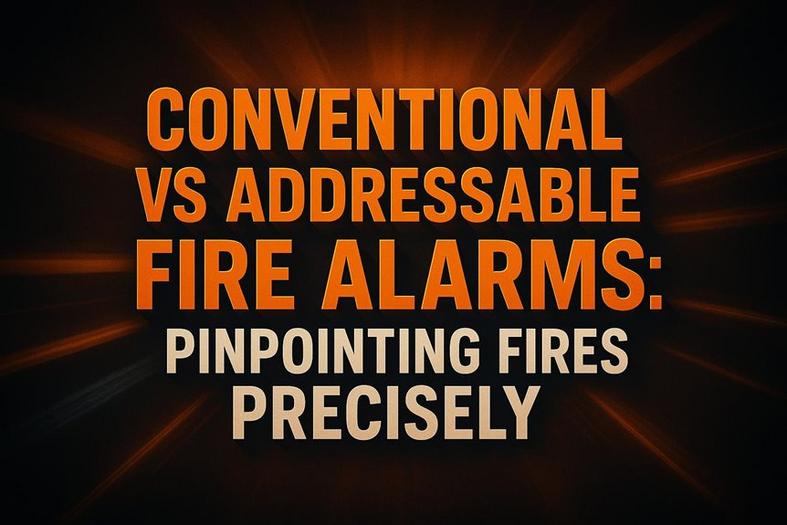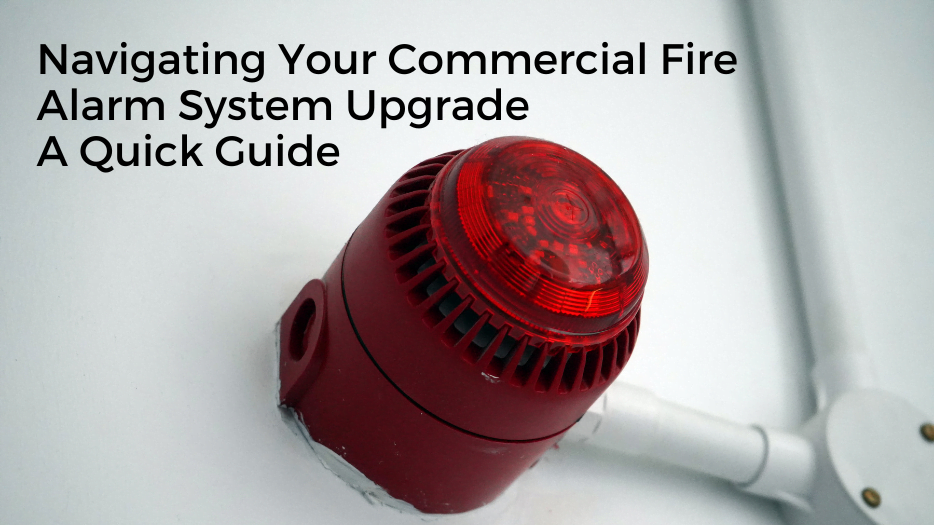In a fire emergency, every second counts. The difference between knowing which room triggered the alarm versus only knowing which floor can decide whether a small incident stays contained or escalates into a disaster. For business owners responsible for staff, visitors and compliance, the type of fire alarm system you choose is a decision with life and death implications.
This guide explains the differences between conventional and addressable fire alarm systems, how they affect safety, compliance, costs and operations and why many UK businesses are moving toward addressable solutions.
The Core Difference
Conventional fire alarms group devices into zones. When an alarm sounds, the panel will show something like “Zone 3 in alarm,” leaving your team to search through an entire wing. Addressable fire alarms, by contrast, give each device a unique digital identity such as “Smoke Detector 14, East Wing, Room A3.” The control panel tells you instantly where the problem is. This single difference shapes everything else: response speed, wiring, maintenance, cost and compliance.
Why Addressable Systems Save Time — and Lives
The precision of an addressable system means fire crews can go directly to the source instead of searching. Intelligent detectors can be tuned so they distinguish between nuisance smoke and genuine hazards, reducing false alarms and unnecessary evacuations. In the UK, BS 5839-1 recommends addressable detection for complex buildings, supporting compliance with the Regulatory Reform (Fire Safety) Order 2005. Because they can be integrated with HVAC, access control and lifts, addressable systems coordinate wider safety responses automatically.
Practical Differences in Use
A conventional system requires individual wiring runs for each zone. If a fault occurs anywhere on that radial circuit, all downstream devices may be lost until repairs are made. Addressable systems use loop wiring, which is more efficient and resilient. If the cable is broken, devices can still communicate from the other direction, keeping protection intact.
In day-to-day terms, conventional alarms may suit a small office or shop where one zone can be checked quickly. But imagine a hotel or hospital wing: without device-level information, precious time is lost. With an addressable system, you know instantly that “Room 318, Smoke Detector, Pre-alarm condition with rising smoke levels” is the source. Staff can investigate and intervene before it becomes a full evacuation.
Installation, Costs and Maintenance
Upfront, conventional panels and devices are cheaper. They remain a reasonable choice for small, simple properties. Addressable panels and detectors cost more, but the wiring is leaner and the maintenance smarter. Over the life of the system, addressable solutions often prove better value. Engineers can diagnose problems to the exact device; self-testing features reduce manual checks; false alarm reduction avoids business disruption and potential fire service charges. For retrofits, the reduced wiring demands of an addressable system often make it the more practical choice.
Reliability and Long-term Value
Reliability is one of the strongest arguments for addressable systems. Their architecture allows faults to be isolated without shutting down whole areas, and self-monitoring identifies developing issues before they become failures. For businesses planning to expand, addressable systems are also far easier to scale: new devices can be added to existing loops and programmed without major rewiring.
Compliance and Confidence
Compliance matters. Addressable systems are aligned with BS 5839-1 standards, helping you meet your duties under the Fire Safety Order. They also provide a clearer audit trail for insurers who increasingly expect advanced, reliable fire protection. In human terms, staff and visitors are more likely to trust an alarm that rarely gives false alerts, which helps ensure they respond correctly when it really counts.
Choosing the Right Approach
For a small shop or office, a conventional system may be adequate and cost-effective. But for multi-storey buildings, hospitals, schools, hotels or manufacturing sites, the case for addressable systems is overwhelming: faster response, fewer false alarms and a system that grows with you. In short, conventional systems protect while addressable systems protect smarter.
Common Questions
Are addressable fire alarms required by law in the UK? The law requires “suitable” detection under the Fire Safety Order. BS 5839-1 sets the industry standard, and for complex buildings that usually means addressable.
Are they worth the extra cost? For larger or high-risk sites, yes. Quicker response, lower disruption and long-term reliability often outweigh the higher initial spend.
Making the Decision
The choice is not just about equipment costs. It is about protecting lives, meeting legal responsibilities and ensuring your business can continue to operate safely. For small, straightforward facilities, conventional alarms provide reliable cover. For anything more complex, addressable systems deliver the accuracy, integration and resilience that modern businesses need.
Ready to explore addressable fire alarm options for your building? Contact our team today to discuss compliance, installation and lifecycle savings.









